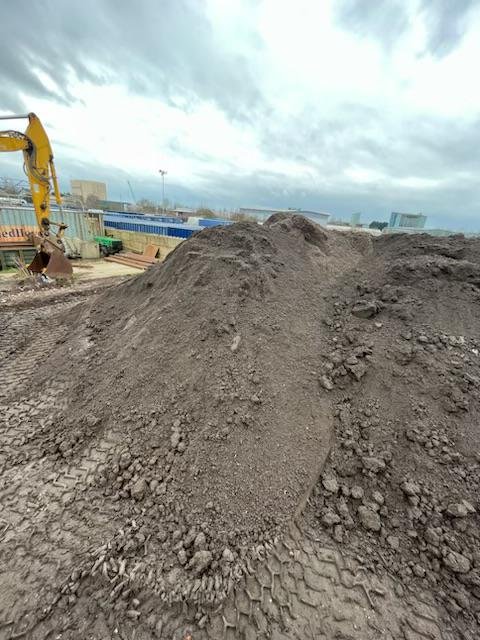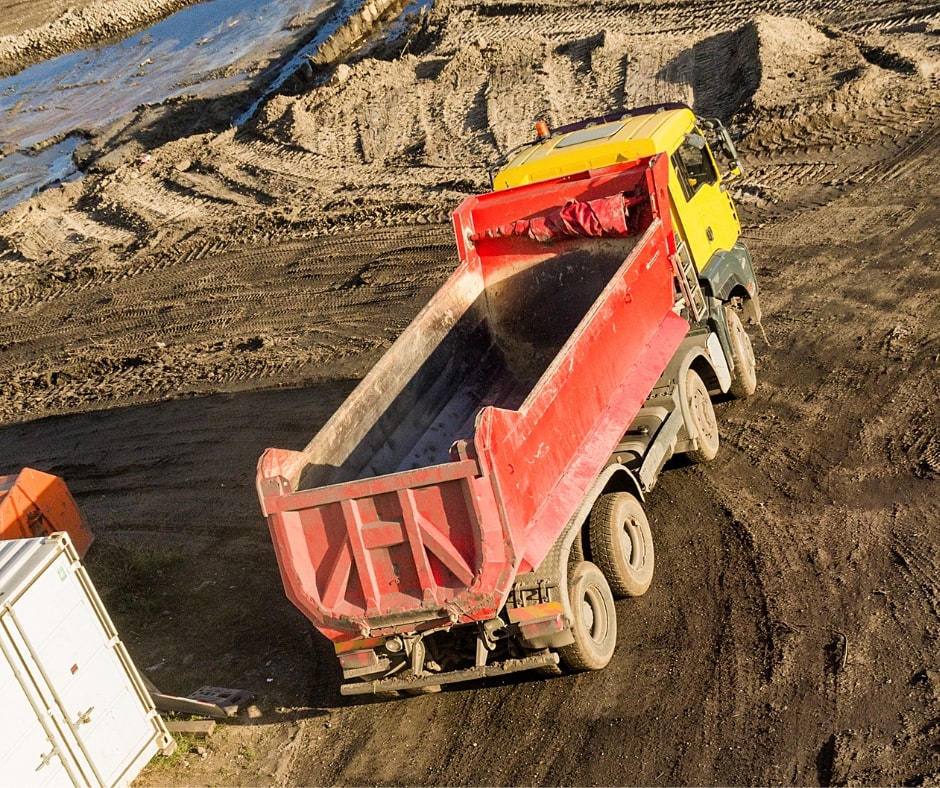Excavation, or digging, is an important part of any construction or civil engineering project, in fact, its hard to think or any outdoor construction works that wouldn’t involve shifting some muck. Whether its to set new levels, create a void for fill materials such as aggregates or concrete or even just create trenches for drainage and other utilities to be placed in, if you’re building something you’re going to need to remove some soil. Most of the time you’ll be able to use this excess material somewhere else on site, but what happens to the soil you can’t use? What options do you have for getting rid of this waste soil? Let’s find out, shall we?
What are the different types of waste soil?
Any soil that is removed from site as waste needs to be classified to determine if the soil is hazardous or not. To do this, you’ll need to complete a hazardous waste assessment under the guidance of WM3. As with all waste materials, the identification and classification of waste soils is controlled by the Waste (England & Wales) Regulations 2011.
Your waste soil needs to be classified according to the List of Waste Regulations 2005 and given a LoW (List of Waste) code, which is determined depending on where the waste came from. It’s important that you give your soil the correct code so that the site that receives your soil knows if they can accept it or not. You can find the full list of construction soil waste codes under section 17-05.

What are the classifications for landfill sites that accept waste soils?
Landfills are classified according to the Landfill (England & Wales) Regulations 2002. The classification determines what types of waste the landfill can accept. The 3 main classifications are:
- Inert– The waste will not undergo any transformations (it won’t degrade) and will not cause any pollution or harm to humans.
- Non-Hazardous– This waste does not pose a significant risk to human or environmental health but could pose a risk in certain circumstances.
- Hazardous– This type of waste can cause harm to the environment and/or human health.
A key point to remember is not to get confused between landfill classification and waste classification.

Does your soil need testing?
If your soil has been excavated from an old brownfield site, or somewhere where industrial processes once took place, it may contain hazardous properties. In this instance your soil needs to be sent away to a laboratory for a full chemical analysis.
This will identify if there are any asbestos, heavy metal, hydrocarbon, or any other hazardous substances in your soil. It is your duty of care as the producer of the waste soil to complete this testing.
Once you have your test results, you can then assess and decide what you are going to do with the waste soil. If it can be used elsewhere either on your existing site or another this should be your first choice. If this is not practical or possible then you can send your waste soil to a landfill site, who may require that you complete further testing.
If you send your soil to an inert or hazardous landfill site they will likely request that you complete Waste Acceptance Criteria (WAC) test. WAC testing isn’t required if you send your soil to a non-hazardous site, but they will likely want to see other chemical analysis.
WAC testing is used to assess the contamination levels of the water that soaks out of the waste (leachate), as apposed to the waste itself. This is because leachate easily gets into water sources and can cause serious damage to the environment.
What do you do with your waste soil?
You have a few options on what to do with your waste soil, first of all, and the best choice is to reuse the soil. If you are reusing it on the existing site, its good practice for you to complete a risk assessment to make sure the soil doesn’t pose a threat to human health or the environment.
You’re also able to use the soil on another site using a materials management plan providing the soil is virgin dug, clean and inert.
Secondly, you can treat the soil if it is hazardous and then reuse the material or dispose of it in a non-hazardous landfill.
Finally, the material can be sent to the correct landfill site for disposal. This should be the last option as it is the least environmentally friendly.

What are your responsibilities when disposing of construction waste soil?
As with all wastes, if you, or your business is producing waste and sending it elsewhere (to a landfill site), you have a duty of care to make sure that you accurately classify your waste and use the correct LoW code. You must document this information on a waste transfer note and provide this to the receiving landfill site.
A Waste Transfer Note can be issued per load, or you can issue one that covers a specified volume of material to cover multiple deliveries. The carrier of the waste must have a waste carrier’s license.
If you have any questions about the removal, testing, transport or, disposal of construction waste contact the team today here. We love talking rubbish!
